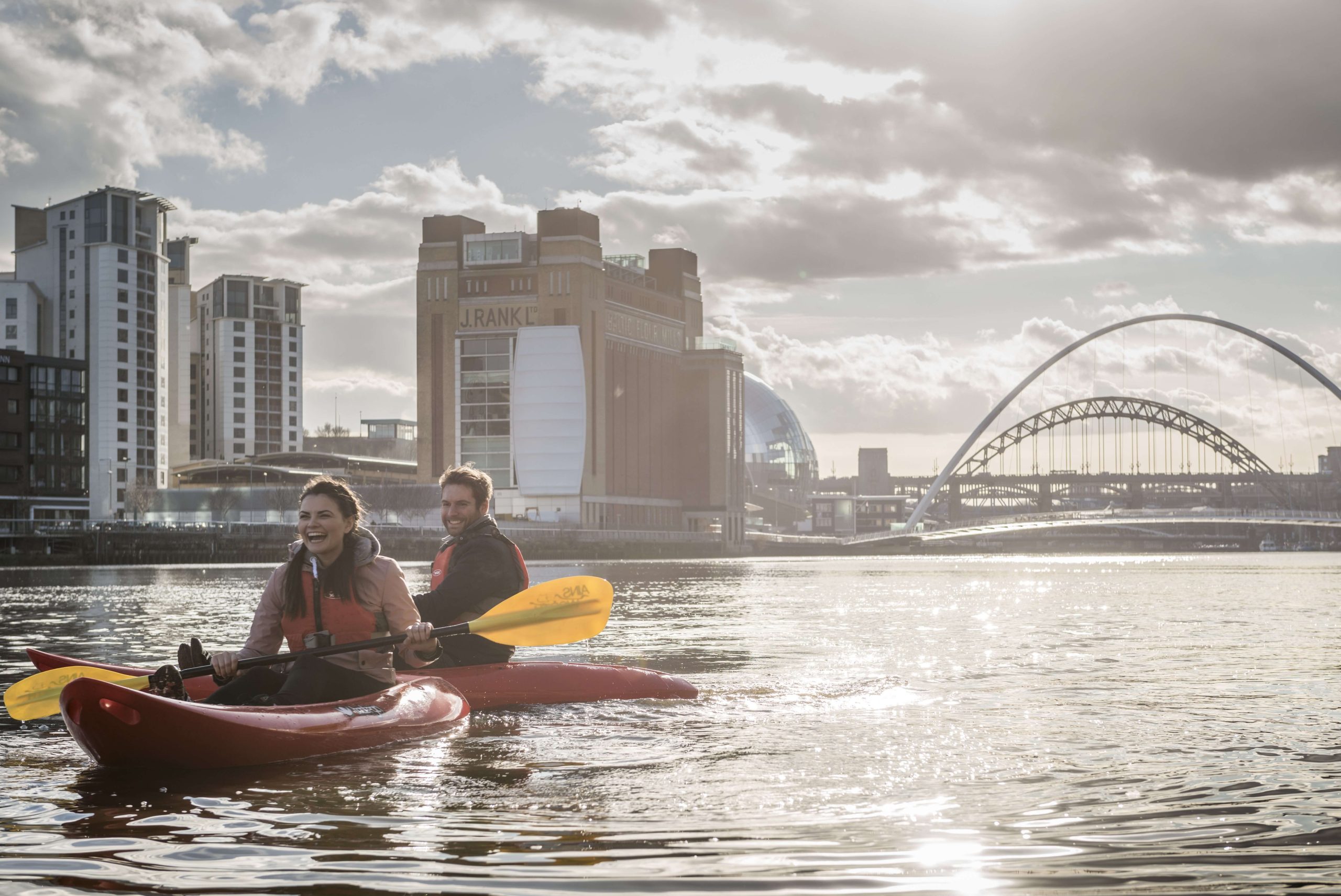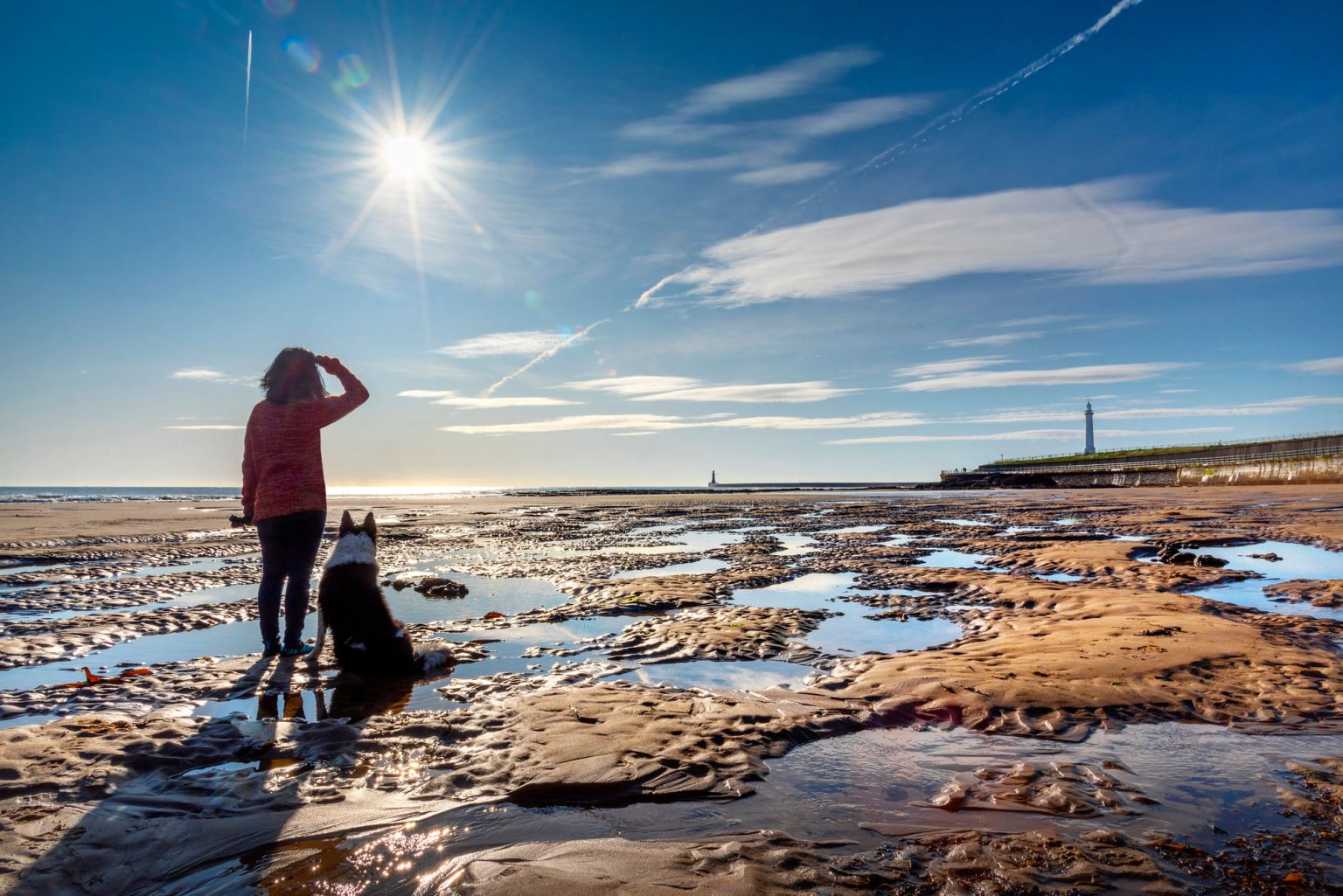The newly released STEAM data sees visitor numbers and spend grow across the region as the visitor economy continues to recover to pre-pandemic levels.
The latest STEAM* data gathered on behalf of the region’s seven local authority areas by Destination North East England has revealed a promising upward trend versus the previous year’s results, as the region welcomes over 69 million visitors, an increase of 5% on 2022.
Whilst visitor numbers haven’t quite bounced back to pre-pandemic highs, growth can be seen right across the region particularly across the number of day visits, with travellers descending on vibrant urban areas, tranquil countryside and stunning coastlines for unforgettable days out.
Durham in particular has recorded a significant leap in day visitors, up by 13.7% on 2022’s figures, reflecting the impact of major developments and investments happening across the county at attractions like Raby Castle, The Aukland Project and Beamish Museum.
Northumberland continues to attract some of the highest visitor numbers in the area with over 8 million day visits to the county, with its own new attractions like Lilidorei and Ad Gefrin likely to impact figures further in 2024. Northumberland posted record overnight visitor figures and spend in 2022, even beating 2019’s figures for overnight stays, suggesting visits to more rural parts of the region had a quicker recovery towards pre-pandemic levels than more urban areas in 2022. 2023’s data shows a narrowing of that gap, as urban areas take more of a share of the region’s visitor numbers, resulting in slightly reduced growth for Northumberland this time around.
Alongside day-trippers, the region also hosted 7.6 million overnight stays – marking the first time the region has recorded more overnight visitors since pre-pandemic. The main growth in overnight visits was in Sunderland (up 6% from 2022 and 4% from 2019), Newcastle and Gateshead (Up 5% from 2022 and 4% from 2019), and North Tyneside (up 4% from 2022 and 2019), all spurred on by a bumper summer of live events which rocked the North East including the sell-out crowds flocking to Sam Fender’s jam-packed gig at St James’ Park and international superstars Beyonce’ and P!nk at concerts hosted at the Stadium of Light in Sunderland.
Investment in new attractions, accommodation and visitor experiences across North East England have also contributed to the growth in numbers, as visitors head to the region to discover new things to see and do, as well as bed down for the night in an increasingly diverse array of hotels, holiday lets, campsites and unique places to stay.
Visitors spent in excess of half a billion pounds more than in 2022 in the region (excluding inflation) however, the ongoing cost of living crisis and high inflation continue to put a squeeze on the region’s spending growth potential, with visitors citing the ongoing cost of living crisis as the main barrier to taking an overnight domestic trip.
Overall, the economic impact of visits to the region stands at a staggering £6.1 billion, when accounting for inflation, increasing by almost £35 million since 2022, demonstrating the significant impact the sector has on jobs, investment and opportunities available to both residents and visitors alike.
The visitor economy continues to be a vital contributor to the region’s economy overall, with over 63,000 now employed in tourism, hospitality, and the wider visitor economy supply chain. South Tyneside notably had high growth in employment numbers, increasing by 8% over 2022’s figures.
The results come as Destination North East England enters the final year of delivering the first-ever Destination Development Partnership pilot in England after receiving £2.25 million from the Department for Culture, Media, and Sport (DCMS) in 2021.
Whilst the growth in overnight stays is positive, it demonstrates the importance of Destination North East England and its work to significantly increase overnight visits and attract more international travellers with innovative tourism and hospitality products, show-stopping attractions and a world-class, inclusive and accessible welcome.
The North East still lags significantly behind other areas of the UK, sitting at the bottom of the league tables when it comes to domestic and international visitor spend – indeed, international visitor spend is 45 times lower than London. There is an urgent need for more investment, a higher number of hotel beds and places to stay, more world-class attractions and budget for international marketing to attract more people to the region.

Destination North East England has been a catalyst for change and has provided the foundations for a ten-year plan that will double the size of the visitor economy in North East England by the end of the decade, in parallel with a trailblazing devolution deal through the North East Combined Authority. It is now more important than ever, that the region comes together to attract investment, develop new products and increase access.
North East Combined Authority Mayor Kim McGuinness said:
“Tourism and culture are a big part of my plans to create jobs and opportunity in the North East and help our economy grow.
“We all know how amazing this region is. The pride we feel is part of our identity, as is the warm welcome we offer. It’s very encouraging to see growth in visitor numbers and spend, not just in the cities but in our towns, along our coastline and in the villages and countryside too.
“But I know we can do more. I’m committed to building on Destination North East England’s ambitious plans to supercharge the visitor economy. It’s important we tell our story with one voice and showcase what this region has to offer to local people and to visitors. If we get this right, we’ll create thousands of good jobs and support local businesses across the region too.
“As North East Mayor I will always be a noisy champion for the North East. It really is the best place to visit.”
John Marshall, Chair of Destination North East England said:
“Destination North East England was established with ambitions to dramatically transform our region’s visitor economy. It is encouraging to see strong numbers from every corner of the North East – indicating that we’re on a path to achieve our goals of doubling the value of the visitor economy by the end of the decade and being recognised as one of Europe’s most welcoming, inclusive and regenerative destinations.
“That said, 2023’s figures reflect the challenging environment the sector and its businesses are operating in. The region still lags behind other parts of the UK, often by some margin and it demonstrates more than ever, the need to attract greater investment, support more jobs and attract more people to the area – in a sustainable and accessible manner.
Against this backdrop, to manage such numbers demonstrates the resourcefulness, resilience and determination to succeed across the visitor economy. I am pleased to see the region’s tourism businesses continuing their recovery from the pandemic and as we, the region, enter into our new devolved future under Mayor Kim McGuinness, it is now more important than ever that the region’s industry continues to collaborate to unlock the untapped potential of our visitor economy.”
Destination North East England is led by NewcastleGateshead Initiative on behalf of the region, working with delivery partners Visit Northumberland and Visit County Durham and in in partnership with all seven local authorities to unlock the untapped potential of the visitor economy.
Sign up to the Destination North East England mailing list for the latest intelligence, data and insights.



